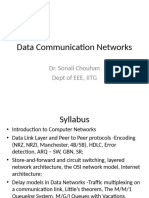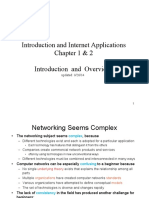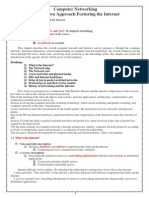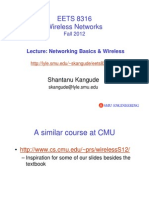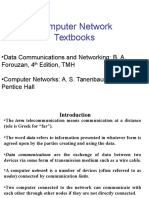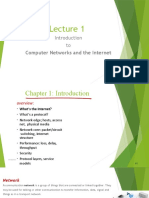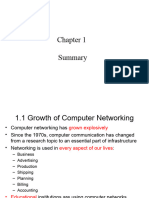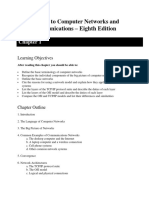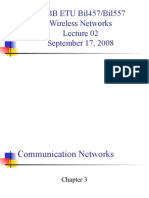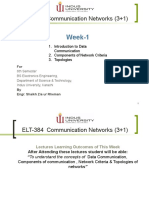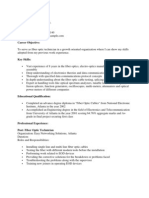0% found this document useful (0 votes)
37 views23 pagesECE 539 Lecture 1 - Comm Network Introduction
The document outlines the introductory lecture for ECE 539 on Communication Networks, presented by Dr. Hesham Abd EL Hakim. It covers course assessments, prerequisites, basics of telecommunications, and the OSI model, emphasizing the importance of communication networks in various sectors. Additionally, it discusses the Public Switched Telecommunications Network (PSTN) and its role in facilitating voice and data communications.
Uploaded by
AresCopyright
© © All Rights Reserved
We take content rights seriously. If you suspect this is your content, claim it here.
Available Formats
Download as PDF, TXT or read online on Scribd
0% found this document useful (0 votes)
37 views23 pagesECE 539 Lecture 1 - Comm Network Introduction
The document outlines the introductory lecture for ECE 539 on Communication Networks, presented by Dr. Hesham Abd EL Hakim. It covers course assessments, prerequisites, basics of telecommunications, and the OSI model, emphasizing the importance of communication networks in various sectors. Additionally, it discusses the Public Switched Telecommunications Network (PSTN) and its role in facilitating voice and data communications.
Uploaded by
AresCopyright
© © All Rights Reserved
We take content rights seriously. If you suspect this is your content, claim it here.
Available Formats
Download as PDF, TXT or read online on Scribd
/ 23


